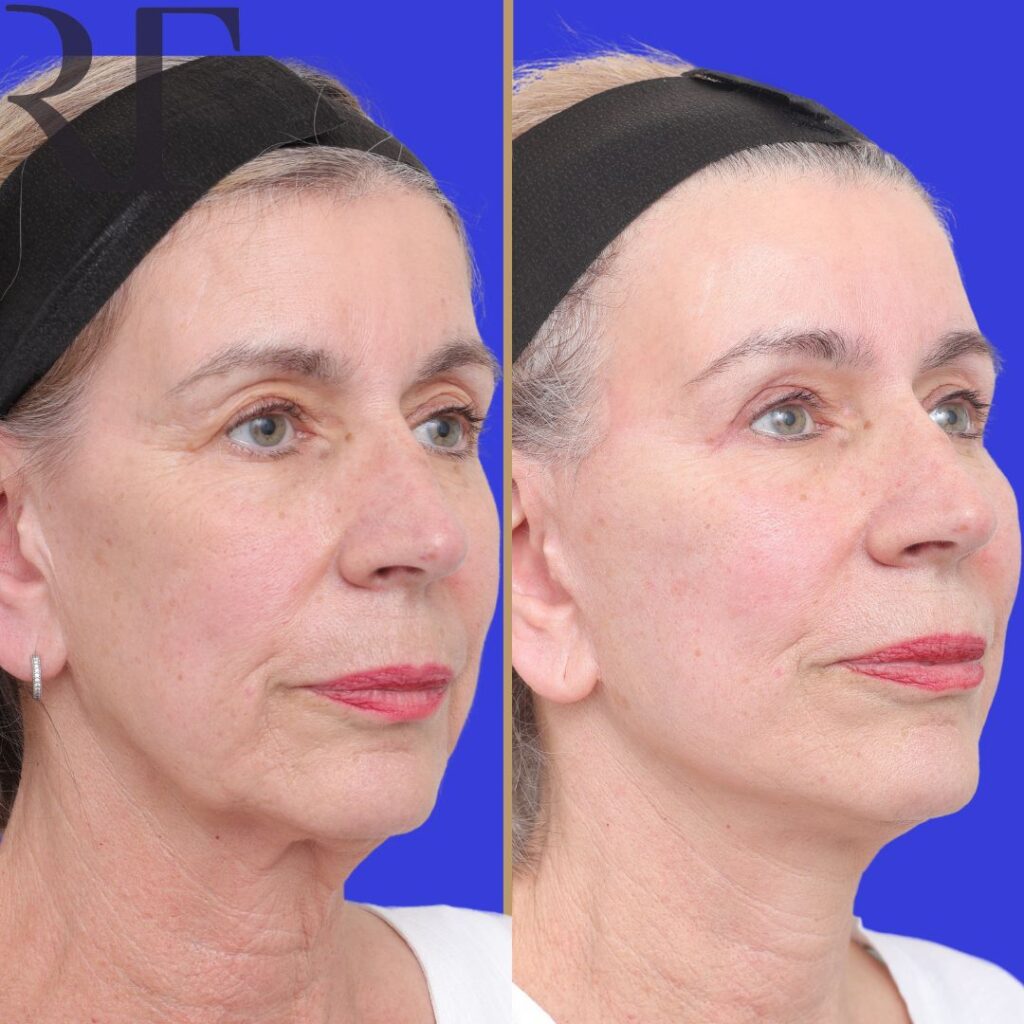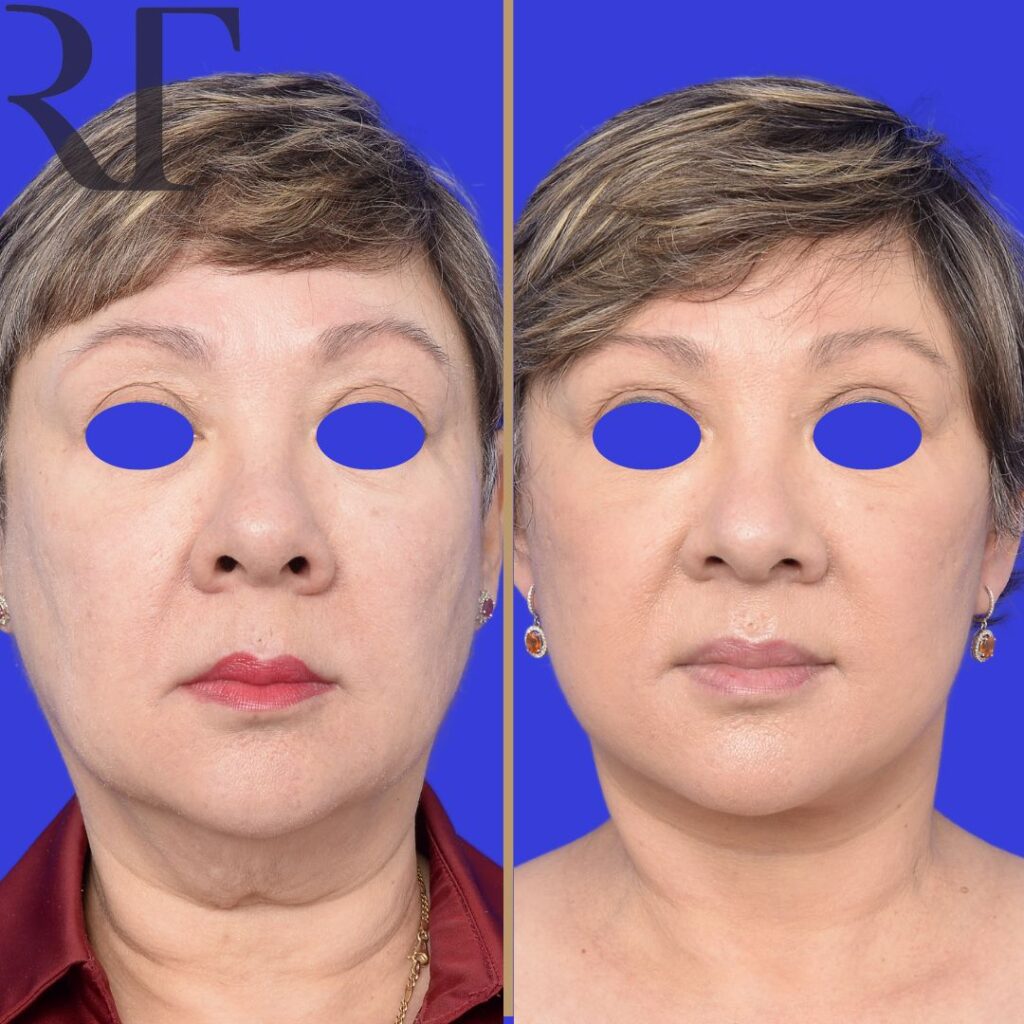It might be difficult to reconcile that something as seemingly invasive as a meloplasty or facelift can go relatively undetected, but facial surgery techniques have advanced considerably in the last decade.
Dr Rodrigo Teixeira, specialist plastic surgeon, who specialises in the deep plane technique, says that, until recently, a facelift was deemed a last resort, something to be untaken in your 60s or 70s with visible scarring and often an overtightened look, but times have changed.
What is a deep plane facelift (meloplasty)?
The deep plan meloplasty (facelift) is a plastic surgery technique that targets the underlying tissue layers of the face, specifically the deeper layers, to combat the visible signs of ageing. There is plenty of medical evidence and facial surgery experts attesting to the deep plane facelift effectiveness in producing longer-lasting results, and that has been the experience of Dr Teixeira over the years.
One of the key advantages of the deep plane facelift is its ability to lift the deeper tissue layers of the face without pulling the skin too tight, minimising the signs of surgery. Furthermore, the deep plane technique allows for customisation of the direction of lift tailored to the individual needs and goals of each patient. For instance, a vertical meloplasty for the cheek lift, or a more oblique direction for more effective lower jowl lift.
Deep plane meloplasty is most commonly performed under general anaesthesia, depending on the extent of the surgery and the patient’s preference. A deep plane meloplasty procedure takes approximately six hours to complete.

Myths abound about the deep plane facelift so let’s dive in and sort the fact from fiction.
Deep Plane Facelift Myths:
-
Deep plane facelifts leave obvious scarring
Understandably with a name like ‘deep plane’ it would be easy to assume that it’s a facial surgery which will leave obvious evidence behind.
However, that couldn’t be further from the truth. With a deep plane facelift, the incision used is placed in such a way that they are hidden in either the natural creases in the skin or your hairline so that there shouldn’t be any visible scarring.
There also should be no concerns about a pulled or stretched appearance as the deep plane facelift procedure works at a deeper level where tissues and muscles are tightened, excess fat is removed and the skin then re-draped over the face eliminating tension on the skin.
-
Deep plane facelifts don’t do anything extra
The truth is that ‘traditional’ meloplasty techniques limit what the plastic surgeon can achieve – they focus on lifting and tightening the skin on the lower face only. When you’re looking for more – dealing with sagging excess skin, deep nasolabial folds, or hollow cheeks, a deep plane facelift may be the better option.
-
A deep plane facelift require a longer recovery time
Again, with a name like deep plane facelift, it is easy to assume that you’ll require a longer recovery time and that the recovery will be more painful. While you are likely to need some pain medication and cold compresses for discomfort, you shouldn’t feel too much pain. The deep plane facelift requires a slightly longer downtime than a ‘traditional’ meloplasty surgery but provides longer-lasting results.
Studies have shown that the deep plane meloplasty results in a statistically significant decrease (71%) in the need for additional surgery such as tuck procedures compared to the ‘traditional’ meloplasty. With a deep plane meloplasty incisions typically heal well with less scar formation and no pulled earlobes due to the less tension put on the skin and tension being on the deeper tissue.
All surgeries have risks and it’s important to consider the risks, work with a specialist plastic surgeon, and ask questions during your consultations.
The risks and complications associated with meloplasty surgery can be found here
-
All meloplasty surgery is for those in their 60s or 70s
The deep plane facelift can be suitable for patients as young as 40 but it’s important to remember that it’s not the age but your facial anatomy, genetics and lifestyle that will determine when or if the time is right. The results can be subtle the earlier the procedure so it’s imperative to manage expectations.
-
Only the celebs get deep plane facelifts
Possibly because deep plane facelifts are only performed by a select few of plastic surgeons, the myth persists that non-celebrities aren’t able to access the deep plane facelift. This simply isn’t true. While it’s very important to select the right surgeon – a specialist plastic surgeon with deep understanding of facial anatomy and experience in the deep plane facelift technique, this surgery is available to ‘regular’ people too.
Learn more about the deep plane meloplasty here or contact our team for further information.

These photos are of real patients of Dr Rodrigo Teixeira who have given consent for their use on this website. Individual results will vary. All surgery carries risk. See a specialist plastic surgeon to be advised what surgery can achieve for you.
Dr Rodrigo Teixeira, MD, FRACS, is a Specialist Plastic Surgeon based in Melbourne, Australia, at Unveil Plastic Surgery in East Ivanhoe Village.
Dr Teixeira has extensive experience in both aesthetic and reconstructive surgery of the face, with a clinical focus on procedures such as facelift (meloplasty), blepharoplasty, and rhinoplasty.
He is a Fellow of the Royal Australasian College of Surgeons (RACS), and a member of the Australian Society of Plastic Surgeons (ASPS) and the Australasian Society of Aesthetic Plastic Surgeons (ASAPS). Internationally, he holds memberships in the American Society of Plastic Surgeons (ASPS), the International Society of Aesthetic Plastic Surgery (ISAPS), and is part of the faculty of the Anatomy for Injectors Course (afi) and the Mendelson Advanced Facial Anatomy Course (MAFAC).
Please note that any surgical or invasive procedure carries risks, and outcomes vary between individuals. If you have concerns about your facial appearance or are considering surgery, please speak with your general practitioner, who can provide a referral to a qualified Specialist Plastic Surgeon.
For further information, contact Unveil Plastic Surgery on (03) 9000 3800.